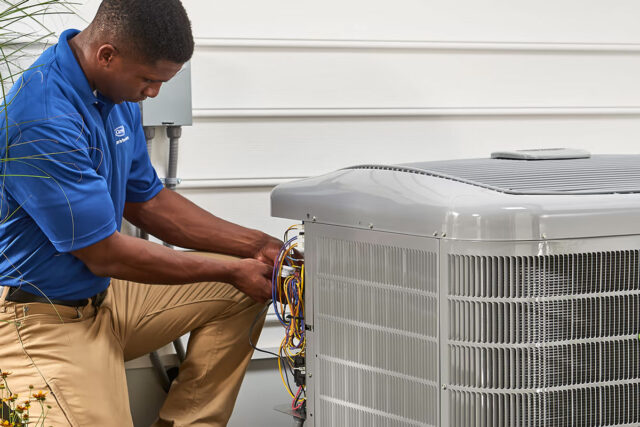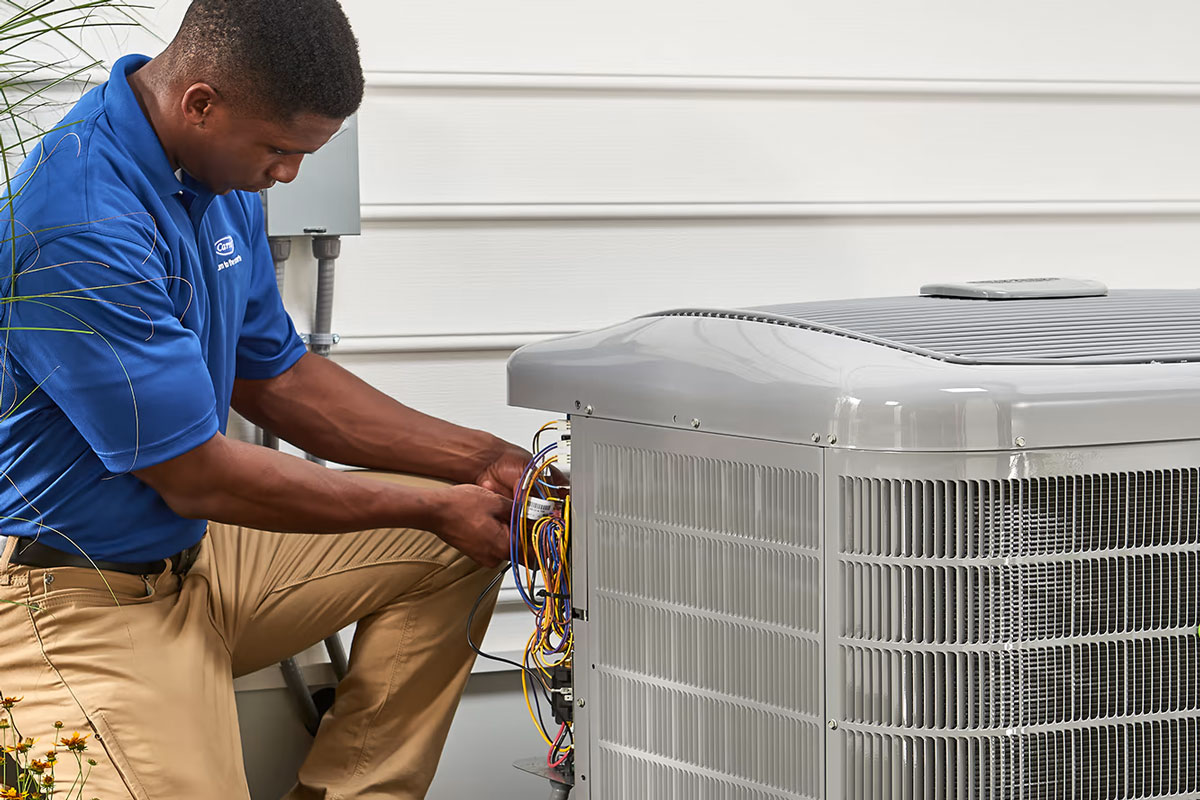What Is an HVAC Split System?
An HVAC split system is a type of heating and cooling system commonly used in residential and commercial buildings. Unlike packaged systems where all components are housed in a single unit, split systems separate the indoor and outdoor components, connected by refrigerant lines and electrical wiring.

Different Types of Heating and Cooling Split Systems
Heat Pumps
Heat pumps are versatile split systems that provide both heating and cooling functions by transferring heat between indoor and outdoor environments. They extract heat from the air, ground, or water source, depending on the type, offering energy-efficient climate control.
Air Conditioners
Air conditioners function solely for cooling purposes, removing heat from indoor spaces and releasing it outdoors. They are ideal for regions with hot climates, providing consistent cooling performance for enhanced comfort.
Furnaces
Furnaces are heating components of split systems that use combustion or electric resistance to generate heat. They distribute warm air through ductwork to heat indoor spaces efficiently, complementing the cooling capabilities of other split system components.
Fan Coils
Fan coils are indoor units that circulate air throughout the space, working in conjunction with heat pumps or air conditioners to distribute conditioned air. They enhance airflow and temperature control, contributing to overall comfort and efficiency.
Ductless vs. Ducted Systems
Split systems are available in both ductless and ducted configurations. Ductless systems utilize individual air handlers mounted in each room, offering zoning capabilities and flexibility in temperature control. Ducted systems, on the other hand, rely on ductwork to distribute air throughout the building, suitable for larger spaces with centralized heating and cooling needs.
What Is A Split Air Conditioner’s Benefit?
Efficiency
Split air conditioners are known for their energy efficiency, allowing users to cool specific zones or rooms without wasting energy on unused areas. By providing targeted cooling, they reduce energy consumption and utility costs, making them a cost-effective solution for maintaining indoor comfort.
Customization
Split systems offer customization options to meet the unique needs and preferences of users. With zoning capabilities and programmable settings, individuals can adjust temperature levels according to occupancy patterns, lifestyle, and comfort preferences, enhancing overall satisfaction and comfort.
What Is A Split System’s Downside?
More Expensive Installation
Compared to packaged systems, split systems typically require more intricate installation procedures, involving the placement of both indoor and outdoor units, as well as refrigerant line installation and electrical wiring. This complexity can result in higher installation costs, requiring professional expertise for proper setup and configuration.
Outside Noise
The outdoor unit of a split system can generate noise during operation, particularly in residential settings where quietness is valued. While modern units are designed for reduced noise levels, it’s essential to consider placement and insulation measures to minimize outdoor unit noise for enhanced comfort.
The Outdoor Unit Requires Space
Unlike packaged systems that house all components in a single unit, split systems require outdoor space for the condenser unit. This can be a consideration for properties with limited outdoor areas or aesthetic preferences, requiring careful planning and placement to ensure optimal functionality and visual appeal.
Contact an HVAC Expert About Your Carrier Split System
When considering a Carrier split system for your heating and cooling needs, it’s essential to consult with an HVAC expert to assess your requirements and determine the most suitable system configuration. Professional guidance ensures proper sizing, installation, and maintenance, maximizing the performance and longevity of your split system.
Privacy Preference Center
Manage Consent Preferences
Targeting Cookies
Performance Cookies
Strictly Necessary Cookies
Cookie-List
- In conclusion, HVAC split systems offer versatile heating and cooling solutions for residential and commercial spaces, providing efficient comfort control and customization options. While split systems offer numerous benefits, it’s essential to consider factors such as installation costs, noise levels, and space requirements when choosing the right system for your needs.
FAQs
- Are split systems suitable for all climates?
- Yes, split systems are versatile and can be adapted to various climates, providing both heating and cooling functionalities.
- Can I install a split system myself?
- It’s recommended to hire a professional HVAC technician for split system installation to ensure proper setup, performance, and safety compliance.
- How often should I schedule maintenance for my split system?
- Regular maintenance is recommended at least once a year to ensure optimal performance and efficiency of your split system.
- Can I add zoning capabilities to my existing split system?
- Yes, zoning systems can be retrofitted to existing split systems to provide enhanced control and comfort for different areas of your home or building.
- Do split systems qualify for energy efficiency incentives or rebates?
- Many split systems meet energy efficiency standards and may qualify for incentives or rebates offered by utility companies or government programs.
CONTACT AN HVAC EXPERT ABOUT YOUR CARRIER SPLIT SYSTEM
Our dedicated team of HVAC professionals can help you determine the best type of HVAC system for your home and can properly install your new unit in your home. Find a dealer near you to get started on your new HVAC system today!
- Many split systems meet energy efficiency standards and may qualify for incentives or rebates offered by utility companies or government programs.

